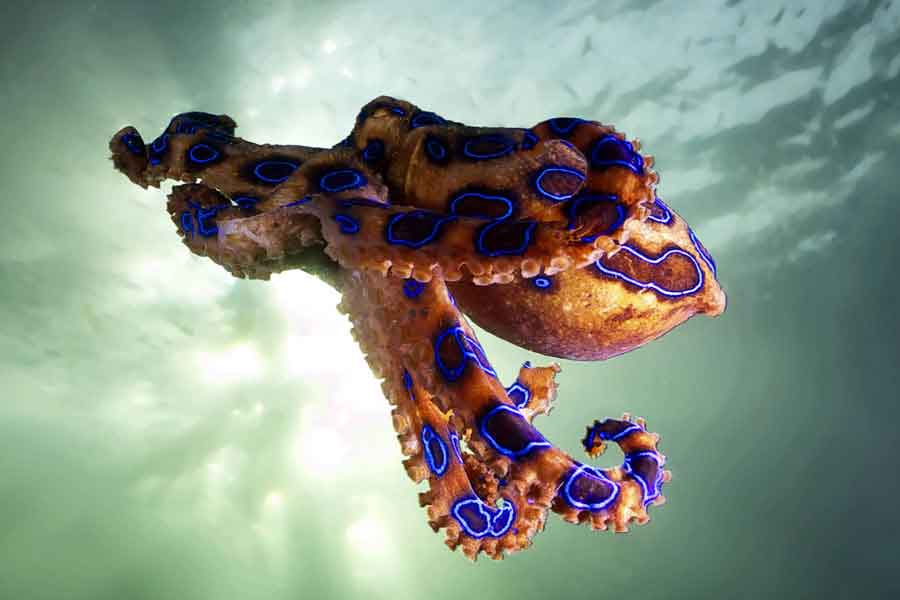
Blue-ringed octopuses, inhabitants of the Australian Great Barrier Reef, are one of the most venomous animals on the planet. Similar to many terrestrial snakes, they display their danger by showcasing vibrant rings along their bodies—a message that seems to say to potential predators, «Don’t mess with me, I can kill you, find an easier prey.» After all, what good is a defensive weapon without good marketing?
During egg-laying, a common octopus seeks refuge in a small cave, hanging the eggs from the ceiling. The mother diligently cleans and ventilates the eggs throughout the three-month incubation period. During this time, the mother cannot leave her future offspring for even a second, as they would be easy prey for many predators on the reef. This tireless care prevents the mother from feeding during this period, gradually weakening her. Once the eggs hatch, the mother inevitably dies, so a female octopus can produce only one brood in her lifetime.
In contrast, the female blue-ringed octopus carries the eggs with her, gripping them with her suckers on the underside of her body. As long as the white eggs remain under the mother’s mantle, no one dares to touch them. The mother can continue moving around the reef without the need to ventilate the eggs, which occurs simply through the natural swimming motion of the female.
In reality, not much more is known about the reproduction of this small animal, which measures only 20 cm from arm tip to arm tip when fully extended. However, we can speculate that if the female can move during the three-month incubation period, there would be no hindrance to her feeding. In fact, her movement would consume much more energy than the female common octopus, which remains stationary. It seems illogical for the female blue-ringed octopus to die once the offspring are born if she can feed during this time.
In this speculative context, one could believe that the female blue-ringed octopus might be the only female octopus capable of producing more than one brood. Especially considering that by carrying the eggs on her body, she produces far fewer offspring than her relative, the common octopus. This could be compensated by having at least two or three broods throughout her life.
Of course, all of this is merely conjecture, based on what may seem logical. The reality is that, like many marine animals, we know very little about the life of this species, despite it having one of the deadliest venoms ever discovered. If we consider that until just five years ago, we had absolutely no knowledge of the reproductive method of whale sharks, which are the largest fish on the planet, we may conclude that we should devote more time and effort to getting to know our potential travel companions on this incredible spaceship called «Planet Earth.»
«One cannot defend what one does not love, and one cannot love what one does not know.»

